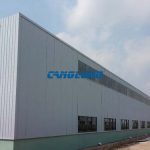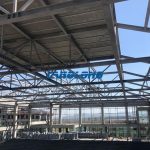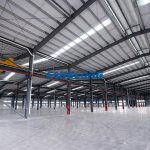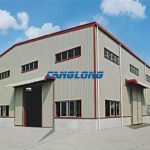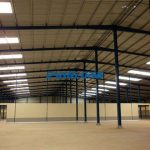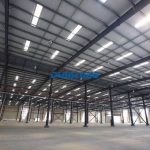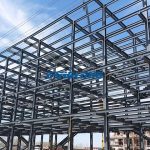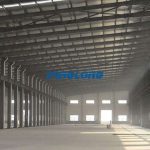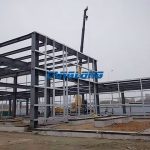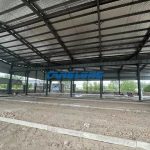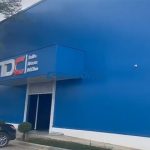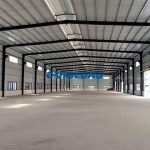Design of the center column of portal structure steel workshop
In modern industrial plants, portal structural steel workshops are widely used due to their advantages of large space, stable structure, and fast construction speed. In these workshops, the center column is an important part of the entire structure and plays an important role in transmitting loads and maintaining structural stability. Therefore, the reasonable design of the center column is of great significance to ensure the safety, stability and service life of the workshop.
1. The function and characteristics of the central column
The center column of the portal structure steel workshop is the skeleton of the entire workshop structure and plays the role of bearing and transmitting loads. The center column must not only bear the weight of the superstructure, but also bear external loads such as wind load and earthquake action. In addition, the center column also plays an important role in maintaining structural stability and preventing the structure from becoming unstable when subjected to external effects. Therefore, the design of the center column must fully consider its load-bearing capacity and stability.
The center column of the portal structural steel workshop has the following characteristics: first, it bears large loads, second, it requires high stability, third, it has many connecting nodes, and fourth, it has a complex structure. Therefore, the design of the center column must fully consider these characteristics to ensure the safety and stability of the structure.
2. Design principles of center column
- Bearing capacity principle: The bearing capacity of the center column must meet the requirements of the superstructure and external loads. In the design, the cross-sectional size and steel type of the center column should be determined based on the weight of the superstructure and the magnitude of the external load.
- Stability principle: The stability of the center column must meet the requirements to prevent the structure from becoming unstable when subjected to external effects. In the design, the cross-sectional shape and size of the center column should be determined based on the overall stiffness and stability requirements of the structure.
- Principle of connection nodes: The connection nodes of the center column must be strong and reliable, capable of transmitting loads and maintaining the stability of the structure. In the design, the connection method and structural measures of the nodes should be determined based on the stress characteristics and structural requirements of the connecting nodes.
- Principle of reasonable structure: The structure of the center column must be reasonable and feasible to facilitate construction and maintenance. During the design, the construction method and structural measures of the center column should be determined based on the conditions and requirements of the construction site.
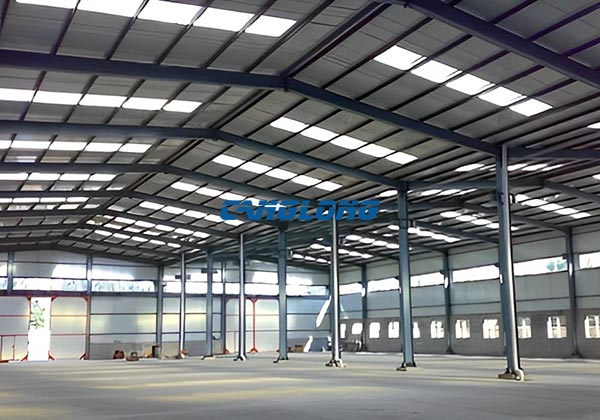
3. Design steps of center column
- Determine the load: Determine the load borne by the center column based on the weight of the superstructure and the magnitude of the external load.
- Select the cross-sectional shape and size: Choose a reasonable cross-sectional shape and size based on the load-bearing capacity and stability requirements. Commonly used cross-sectional shapes include rectangle, circle, etc.
- Calculate the bearing capacity and stability: Calculate the bearing capacity and stability of the center column based on the selected cross-sectional shape and size. If the requirements are not met, the cross-sectional shape and size should be adjusted or other measures should be taken.
- Design connection nodes: According to the stress characteristics and structural requirements of the connection nodes, design reasonable connection methods and structural measures. Commonly used connection methods include welding, bolting, etc.
- Draw construction drawings: Based on the design results, draw construction drawings of the center column, including elevations, floor plans, node details, etc. Construction drawings should be clear and concise to facilitate construction and maintenance.
4. Design considerations
- Fully consider various unfavorable factors: Various unfavorable factors should be fully considered in the design, such as earthquake effects, wind loads, etc., to ensure the safety and stability of the center column.
- Reasonable selection of steel model and quality: According to the stress characteristics and requirements of the center column, rationally select the steel model and quality to ensure the load-bearing capacity and service life of the center column.
- Strengthen node design: nodes are an important part of the center column, and whether their design is reasonable or not directly affects the safety and stability of the structure. Therefore, the node design should be strengthened to ensure the bearing capacity and stability of the nodes.
- Consider the convenience of construction and maintenance: The convenience of construction and maintenance should be considered in the design, and standardized and modular design methods should be adopted as much as possible to facilitate construction and maintenance.
- Conduct detailed structural analysis: For complex portal structural steel workshops, detailed structural analysis, including finite element analysis, etc., should be conducted to ensure the rationality and accuracy of the design.
In short, the design of the center column of the portal structure steel workshop is a complex and important task, which requires full consideration of various factors and requirements to ensure the safety and stability of the structure. Through reasonable design and construction, the service life of the workshop can be extended and production efficiency and quality can be improved.
